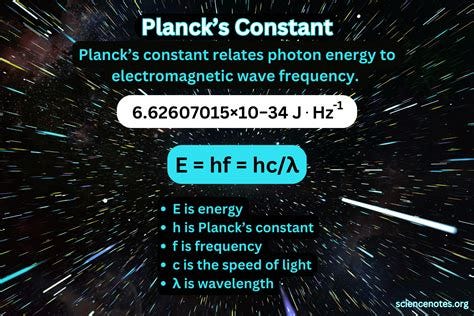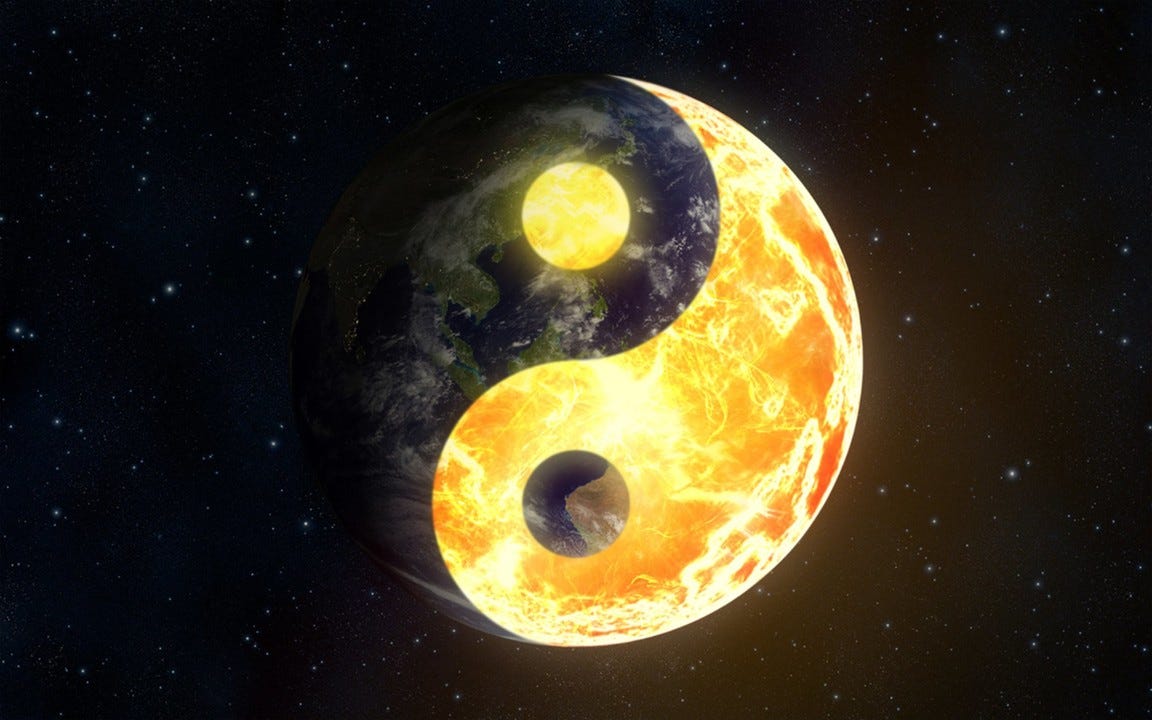One of the biggest problems in physics is supposedly the incompatibility between the best theory about physical behaviour at the smallest scale—quantum mechanics—and the best theory about physical behaviour at the largest scale—Einstein’s theory of relativity cannot be combined into one great, overarching theory. At the moment they seem incompatible with each other.
Caveat: I am not a scientist, but an engineer. And this simple engineer wonder why the two must be combined. I don’t see the need, because both theories operate at vast differences of scale. So let’s talk about scales.
1. Scale dependency
The smallest possible distance is the Planck length: this is the smallest possible distance in reality that still makes sense. Anything smaller than the Planck unit1 does not physically make any sense (and I think a certain graininess is essential for our reality). This Planck length is about 1.616 x 10-35 metres.
Since we exist somewhere in the middle (scale-wise), we invented the Metric system2 with the metre as measurement of length. The metre is relative, the Planck length is absolute. Hence, one metre is about 6.188 x 1034 Planck lengths.
The largest scale3 is the size of the observable Universe, which is about 8.8 x 1028 metres, or some 5.445 x 1063 Planck lengths. The middle scale is then 2.722 x 1033 Planck lengths or about 0.044 metres (44 millimetres)—do you believe in coincidence?
Here’s the thing: as an engineer, I strongly believe scale matters. Physical properties change across scales, it’s why an ant can lift fifty times its body weight while an elephant can’t4. It’s why we need—and use—different tools at different scales. Straightforward example: we use a pincer to lift a postage stamp and the huge crane of an offshore lifting platform (like, for example, the 9,000 tonne cranes of Heerema’s Sleipnir) to lift a wind turbine with a 150 metre diameter5. Some for measuring equipment: we need a microscope to look at small scales and a telescope to observe large scales. One tool does, most definitely, not fit all. Therefore, I see both Quantum Mechanics and the Theory of Relativity as tools, where their applicability depends on their scale. So why should one theory6 fit all? I don’t see it.
That’s why I think reality is riddled with dualities, because it doesn’t behave the same over different scales. Let’s call this duality 1: different behaviour—hence different physical laws—at greatly different scales.
2. Strength/Range duality
Which brings us to our second deep-seated duality: the strength/range duality. To wit:
• The strong interaction is the strangest interaction, but only works at subatomic scales (it does not work outside an atom);
• The weak interaction is the second strongest, but also only works at atomic scales (it does not work outside an atom);
• Electromagnetism is the third strongest: it creates electric and magnetic fields that hold orbital electrons around atoms, as well as chemical bonding and electromagnetic waves (including visible light), and forms the basis of electrical technology;
• Gravity is the weakest interaction;
Typically, both the electromagnetic and gravitational force weaken over distance via a parabolic curve; that is if the distance doubles, the force is reduced by 1/4th. Yet gravity reaches over longer distances than electromagnetism because it tends to cancel itself out within large objects, while gravity accumulates within large objects. So over astronomical distances, gravity tends to be the dominant force.
Hence my proposed strength/range duality: the higher the strength of a fundamental interaction, the shorter the range. It’s not an exact mathematical relation like Heisenberg’s Uncertainty Principle (at larger scales, reality becomes too complex for those), but a principle nonetheless.
Yet it does show that physical behaviour changes in a qualitative way between the smallest and the largest scales, as different interactions become not only dominant while others become insignificant to the point where they are impossible to measure.
To wit: quantum uncertainty does not exert any influence on astronomical scales and it is impossible to be measured at those scales. Conversely, gravity becomes so weak at quantum scales that it indeed does not exert any influence7 and is also impossible to be measured at those scales.
3. No infinities at each end of each scale
Then there’s another duality, which I’ll call ‘no infinities at each end of the scale’. Why? Because otherwise we would not exist.
For one, I think there’s a principle at work that limits the maximum size of reality; that is, I suspect that the so-called ‘laws of physics’, or—more broadly speaking—the consistency of axioms is limited to a certain maximum size, otherwise we wouldn’t exist.
Or, to put it another way: if there has indeed been a Big Bang, then it’s theoretically impossible for this Big Bang to be infinite. If the Big Bang was (is and will be) truly infinitely large, then it would still be happening. If that Big Bang stops at a certain point—which ours theoretically did—than it can evolve into the Universe as we observe it today. It physically cannot produce an infinite amount of matter in a finite amount of time. If the Big Bang was truly infinite, it would last all eternity.
Therefore, there is a limit to how big the largest scale can be in a Universe like ours.
For another, I suspect a minimal size is necessary for actual movement to be possible. Many of you may have heard about Zeno’s paradox about Achilles and the tortoise, which goes like:
“In a race, the quickest runner can never overtake the slowest, since the pursuer must first reach the point whence the pursued started, so that the slower must always hold a lead.”
Note that this only works if there is no minimum size to reality. But since we do have one—the Planck length—Achilles will overtake the tortoise. Suppose Achilles goes twice as fast as the tortoise (to simplify matters a bit) then, at some point, Achilles will come to within two Planck lengths of the tortoise. Then Achilles will move two Planck lengths and the tortoise one. Now they are exactly next to each other.
A length shorter than the Planck length does not physically exist8, so the tortoise cannot run half a Planck length. The tortoise must run a full Planck Length and in that time, Achilles runs two, overtaking the tortoise (and subsequently increasing his lead).
Therefore I think a minimum size limit is a necessity for motion to exist.
Do I have a hypothetical basis for this minimum size? Well, suppose the Big Bang is actually a Big Bounce, then this bounce would never happen if there is no minimum size limit; that is, as the previous Universe contracts under immense gravitational forces, then it would literally disappear into nothingness if there was no minimum size limit. A minimum size puts a limit to the contraction and makes it bounce back: the Big Bounce that we call the Big Bang.
So there you go, deep-seated duality number 3: no infinities on each end.
4. Are singularities exempt?
Finally, something about black holes, the Big Bang and other singularities. The main reason why a large part of the scientific community wants to ‘unite’—for lack of a better word—Quantum Mechanics and the Theory of Relativity is because of the existence of singularities like the Big Bang and black holes. Theoretically—note the weasel word9—if black holes as described by, say, Stephen Hawkins exist or the Big Bang has been an actual event, then the Theory of Relativity can’t explain them (and these are indeed phenomena at the scale that the Theory of Relativity applies to). However, there is no experimental verification, nor direct observations of either the Big Bang or black holes.
In other words, we don’t know for sure that black holes exist, nor that the Big Bang was an actual event. Possibly the remnants of the supernova of a star above the Chandrasekhar limit do not collapse into a black hole, but in a different type of intensely dense mass that does not violate the Theory of Relativity10. Also, maybe the Big Bang—the formation of this Universe literally out of nothing—didn’t happen, but was rather the Big Bounce of the collapsing cosmos that came before us11?
Now, if I got a Euro for each person-per-year who have been working on the purely theoretical implications of black holes, I could most probably stop working. But that doesn’t negate the fact that no direct evidence has been found for them, so far (and unlikely will be in the near- to mid-future).
Why theorise about such a Theory of Everything (ToE) when there is no proven—and I mean proven by experimental evidence—need for it? The need is purely theoretical, and as such it’s no wonder candidates like String theory, loop quantum gravity, and many others have precious little that can practically be verified with experiments. I would even reverse that: we have so many ToE candidates because there is almost no possibility of experimental verification. One might view it as an embarrassment of riches. Another might see it as a wild goose chase.
Right now, I don’t see the need for an overarching Theory of Everything, because there is a huge amount of evidence suggesting that our cosmos is deeply dualistic; that is, it behaves qualitatively different at largely different scales, suggesting that this is an inherent property of our reality.
Support this writer:
Like this post!
Re-stack it using the ♻️ button below!
Share this post on Substack and other social media sites:
Join my mailing list:
Author’s note: long time, no essay. Here’s one with hopefully enough food for thought to keep you going until the next one.
Not that my other posts don’t produce ‘food for thought’, just a different type of food. Enjoy and many thanks for reading!
Approximately the energy-equivalent of the Planck mass, the Planck time and the Planck length;
Among others, I know;
If we ignore notions like the Multiverse;
To give but one simple example;
They have been scaling up quite a bit over the years;
The Holy Grail of science called the ‘Theory of Everything’;
Except in black holes, the Big bang and other singularities, I hear you say. I’ll get to that;
At least not in this Universe;
That I also use myself…;-)
Maybe there’s a principle equivalent to Pauli’s Exclusion Principle—without which ordinary matter would, indeed, collapse—that forbids a collapse into a gravitational singularity;
Which would also support my ‘no infinities on each end of the scale’ hypothesis;









